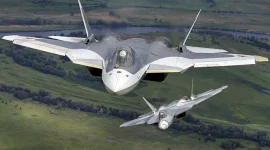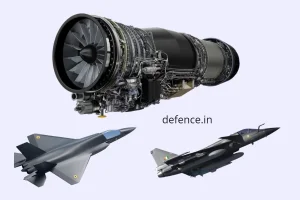- Views: 516
- Replies: 5
As Aero India 2025 approaches, the excitement surrounding potential new aerospace program announcements is palpable. However, this enthusiasm is often tempered by the historical reality of prolonged development timelines within India's defence public sector undertakings (DPSUs).
A shift in approach is needed, where announcements translate into tangible progress within a reasonable timeframe.
Traditionally, Aero India has been a platform for showcasing ambitious aerospace programs, often symbolized by scale models representing future aspirations.
Yet, the journey from these announcements to actual flying prototypes typically stretches over 5-6 years, sometimes even longer. This extended timeline has drawn criticism and raised concerns about the efficiency and urgency of India's defence projects.
The typical pattern observed at Aero India involves grand announcements of new projects, such as advanced fighter jets, drones, or missile systems, accompanied by scale models or artist renderings.
While this generates initial excitement, the subsequent progress often lags. Securing funding, completing detailed designs, constructing prototypes, and conducting rigorous testing can take years due to bureaucratic hurdles, technical challenges, and budget constraints.
This long wait often creates a public relations challenge for DPSUs. Each year that passes without significant progress can fuel skepticism, especially in the rapidly evolving aerospace sector where technological advancements can quickly render initial designs obsolete.
To address this issue, industry analysts and stakeholders are advocating for a more cautious and strategic approach to announcements by Indian DPSUs. They suggest that announcements should be made only when a clear and achievable timeline is in place for major milestones, such as prototype testing, within 12-24 months. This would demonstrate a commitment to speed and efficiency.
Instead of relying on scale models to showcase future potential, DPSUs could focus on presenting tangible progress. This could involve providing updates on ongoing projects nearing crucial stages like prototype flights or advanced trial phases.
Furthermore, new programs should not be announced unless funding is secured and initial research and development phases are well underway, minimizing the gap between announcement and action.
By managing expectations and emphasizing near-term achievements, DPSUs can rebuild trust with stakeholders, the public, and international partners. A more disciplined announcement strategy could also incentivize internal processes to become more efficient, reducing unnecessary delays.
In today's competitive aerospace market, speed is crucial. By demonstrating the ability to deliver on promises within a reasonable timeframe, India can strengthen its position in the global arena and showcase its growing capabilities in aerospace and defence technology.
Aero India 2025 presents an opportunity for India's DPSUs to shift from showcasing models to delivering milestones, signaling a new era of efficiency and innovation.



